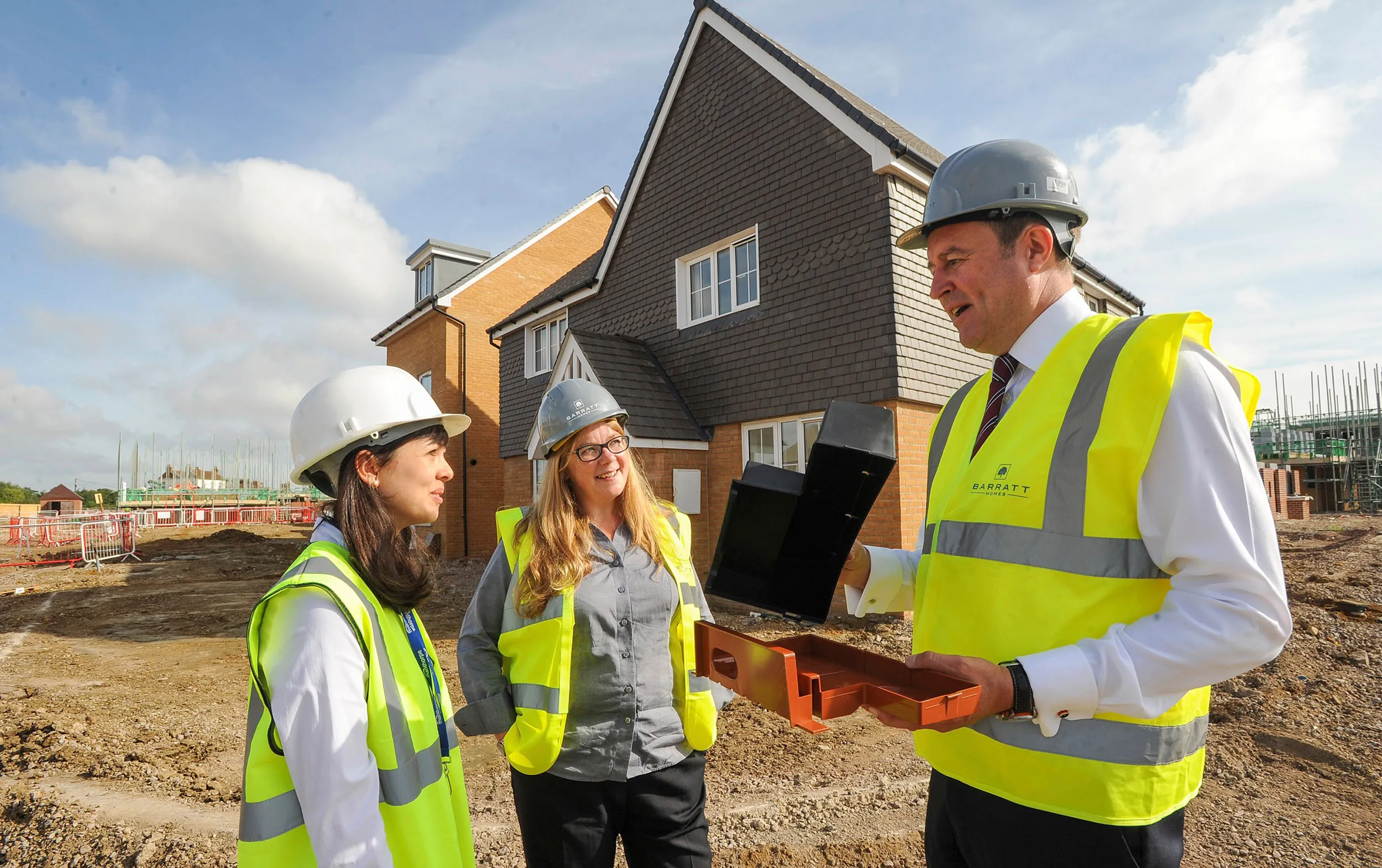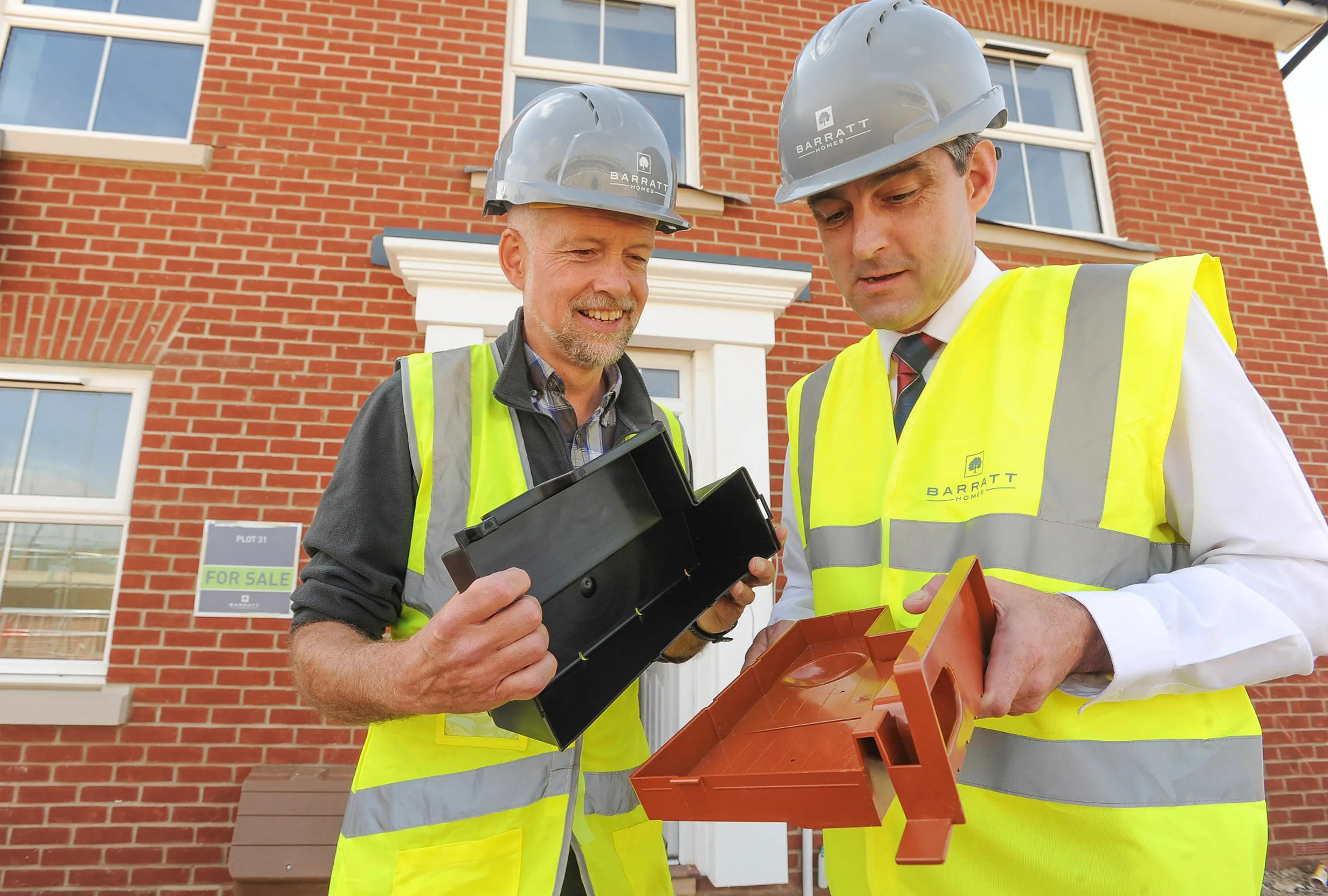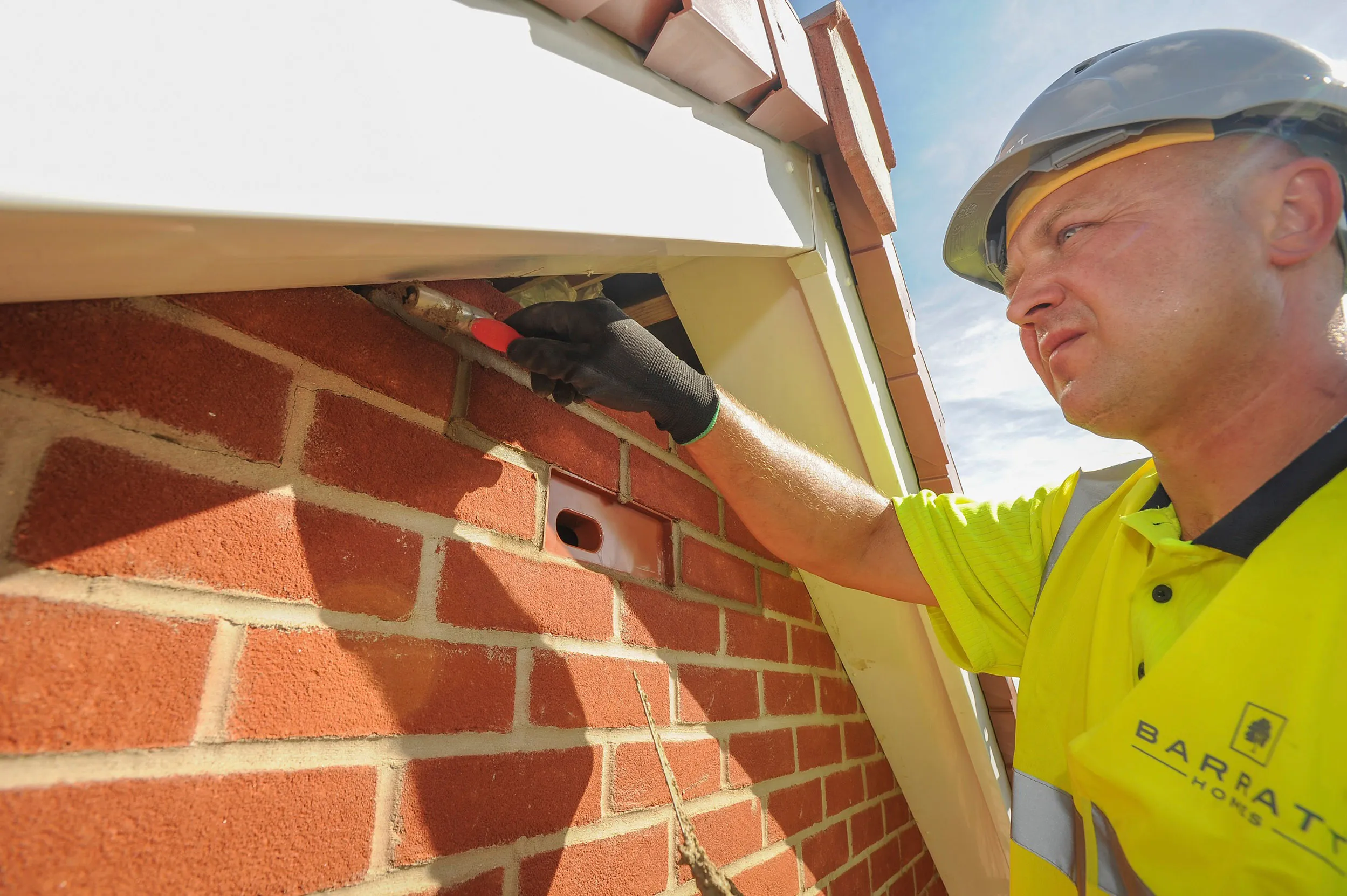Welcome the wildlife
Imagine stepping into a new housing estate alive with the cheery chirp of sparrows, the buzzing of bees and the calls of summertime swifts. With nature in crisis and plans to build 300,000 homes in the UK every year, this is what we need new housing developments to sound like. The good news is a major UK housing developer is already proving if we build in the right way, nature will move in.

On this page
Testing times
Kingsbrook estate on the edge of Aylesbury is a nature-saving experiment. In 2014 the UK’s largest housing developer, Barratt Developments Plc, began working with Aylesbury Vale District Council (now Buckinghamshire Council) and the RSPB on plans to demonstrate how housebuilding can provide homes for wildlife and benefit the people who come to live there.
The ambition is that successful ideas and methods tested at Kingsbrook will be rolled out more widely by Barratt Developments Plc and the wider housebuilding sector. With the UK Government wanting to build 300,000 homes a year by the middle of the decade, this work is a crucial blueprint for how all new estates could be.

The sound of silence
Why do we need our new homes to provide for wildlife too? The evidence is all around us. Nature is in crisis, including many of the species that often live around our homes. Around 60% of UK House Sparrows have been lost since the 1970s, with Urban Sparrows particularly badly hit. Starlings have fared worse, with a 66% drop in the same time period. Summer visitors such as House Martins and Swifts are seeing huge population crashes while Dunnocks, Song Thrushes and Wrens are also under threat. All these birds are now on the Red List or Amber List.
But that’s just the birds. Insects such as bees and butterflies, small mammals like hedgehogs, and amphibians like our frogs and toads are also disappearing from places they were once common. The reasons for their declines are many, but nowhere to live and nothing to eat are two big factors.

Bringing nature back
Kingsbrook estate is big – with 2,450 homes being built. Any development of this size will have an impact on the nature that was there before. But with the need for new homes in some parts of the UK, the Kingsbrook experiment wanted to show that there are ways to work with the existing natural habitats while creating new homes for nature in the plans.
At Kingsbrook many of the old hedgerows and fields have been kept, with housing built around them. The Barratt Development Plc team has also built hedgehog highways, put up internal bat and swift boxes as well as planting for pollinators and other insects on verges and meadows. New orchards and native trees grow around the homes, and wetlands have been created for wildlife, and as a means of slowing rainwater run-off to help drainage.

Not just another brick in the wall
The experiment seems to be working. A survey from 2021 compared to one before the development started shows that since the first 600 houses were built, there has been no loss of bird species (holding steady at 65). The number of breeding species increased by one – from 41 to 42. There were also huge increases in the number of individual birds for many species, including the House Sparrow (up 3,941%) and Starling (up 96%). The sparrows took a particular shining to the swift boxes, showing nature will adapt if it is allowed to.
Some species, which might have been expected to decrease also rose, including the Amber Listed Reed Bunting (up 65%) and Whitethroat (up 72%).
For insects, bumblebee numbers more than doubled from 427 to 929, while butterfly numbers and diversity stayed the same. This is a great start, but with insect numbers naturally fluctuating year-on-year, more evidence is needed to confirm these positive changes.

Room for improvement
While it was mostly good news, a few bird species did decline, including the Chaffinch (down 84%), which is experiencing declines nationally, and Linnet (down 83%), possibly because of the need for the new habitats to mature.
A report on the findings also recommended creating larger areas of scrub for nesting birds, more plants for pollinators and improving wetlands to encourage more Reed Bunting and Waterfowl.
But overall, the results show that if we really want nature to thrive, the way we build new homes can be a crucial part of the jigsaw.
Helen Nyul, head of biodiversity at Barratt Developments Plc, said: “To have shown that building a major new community can have such beneficial impacts on wildlife is really positive and gratifying.
“We have worked closely with the RSPB to showcase how best to look after wildlife when building much needed new homes. We want the findings from this survey to be used as an inspiration for how to give nature a home when building new communities.”

Welcome nature into your outdoor space
Fancy making your outdoor space more wildlife-friendly? We’ve loads of ideas and tips in our Nature on Your Doorstep section of our website, which has been supported by Barratt Developments Plc.
To find out more about our partnership with Barratt Developments Plc, head here.